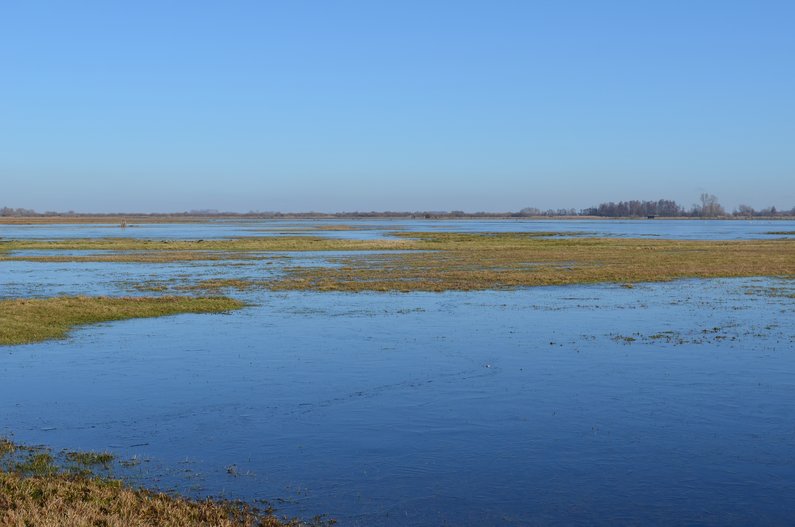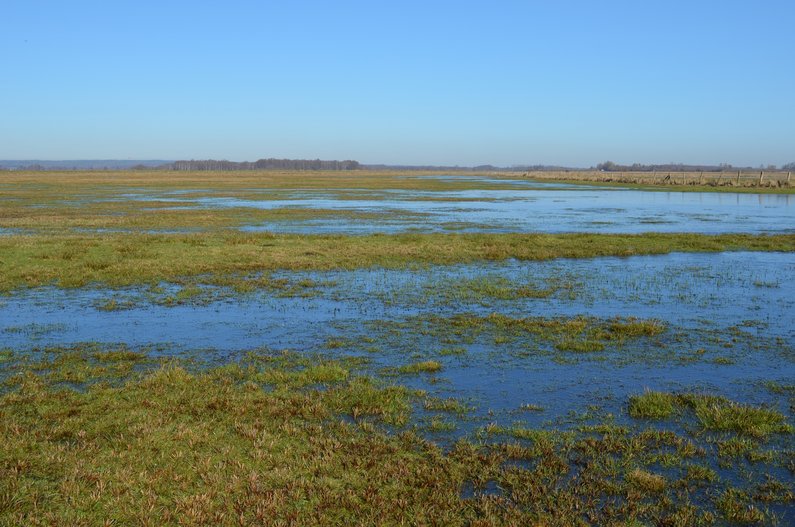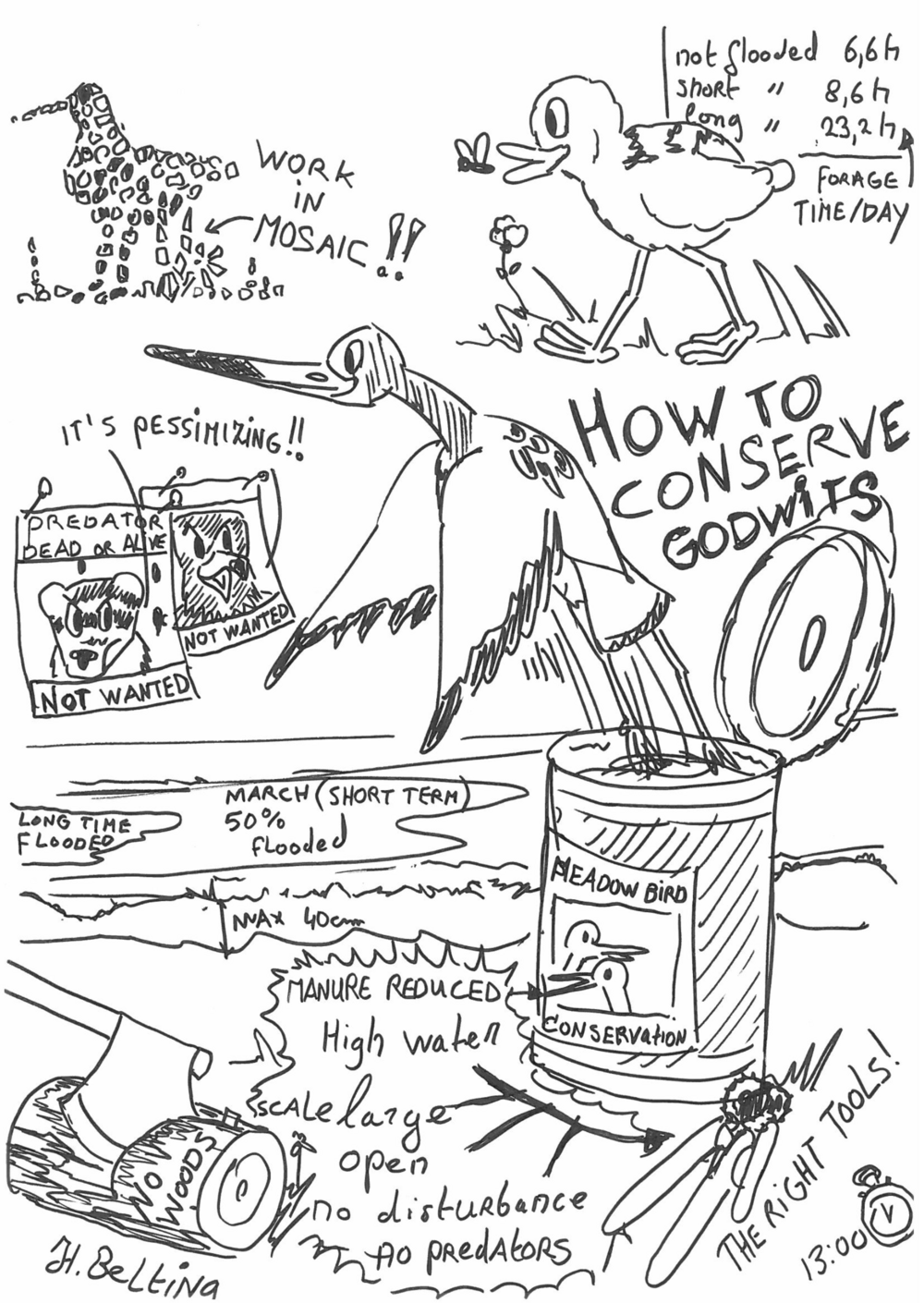The project
Habitat optimisation and site management
Ideal meadow bird habitats
Breeding areas for meadow birds do not maintain themselves. On the one hand, modern agricultural land use leads to a decline of meadow bird populations. On the other hand, abandonment of land use also results in habitat loss, because open meadows and pastures become fallow land.
To maintain breeding populations of grassland breeding birds in Central Europe, adapted land use forms are needed that meet their habitat requirements.
Within this project, we aim to have 21,000 ha of grassland optimised for meadow birds in Lower Saxony. Currently, there are approximately 6,000 ha in an almost ideal state. To optimise the remaining 15,000 ha, measures of different composition, intensity and scope are required, depending on the condition of the respective areas.
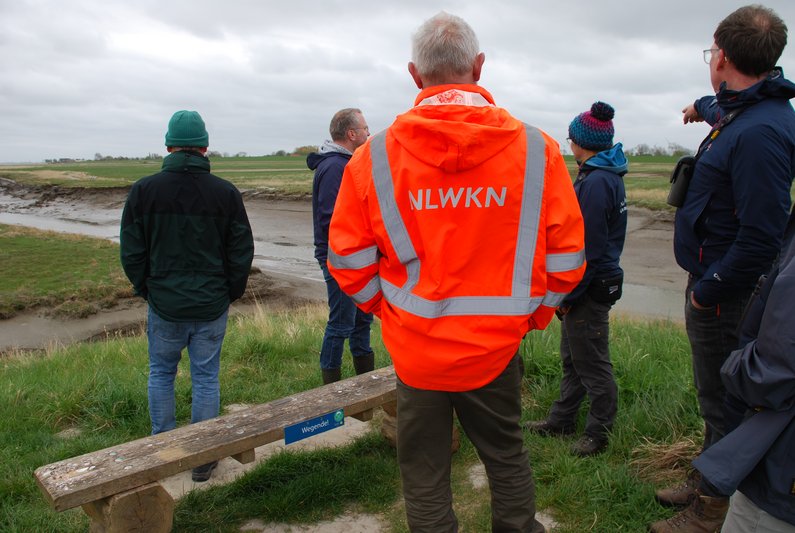
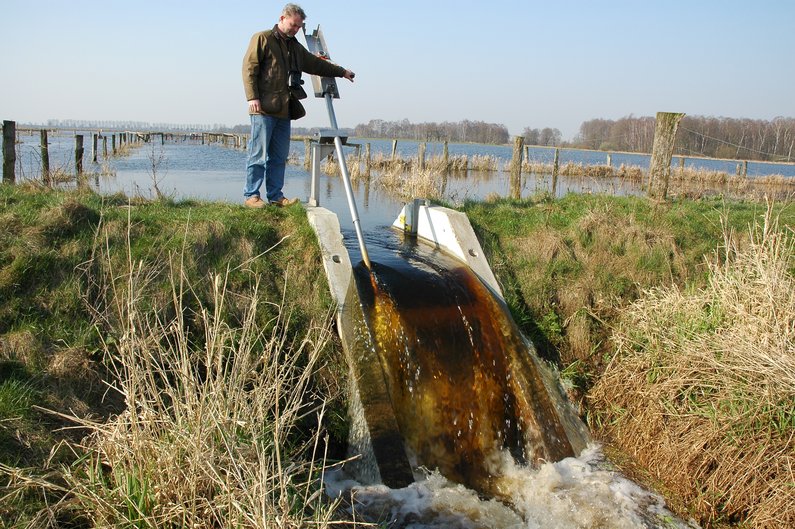
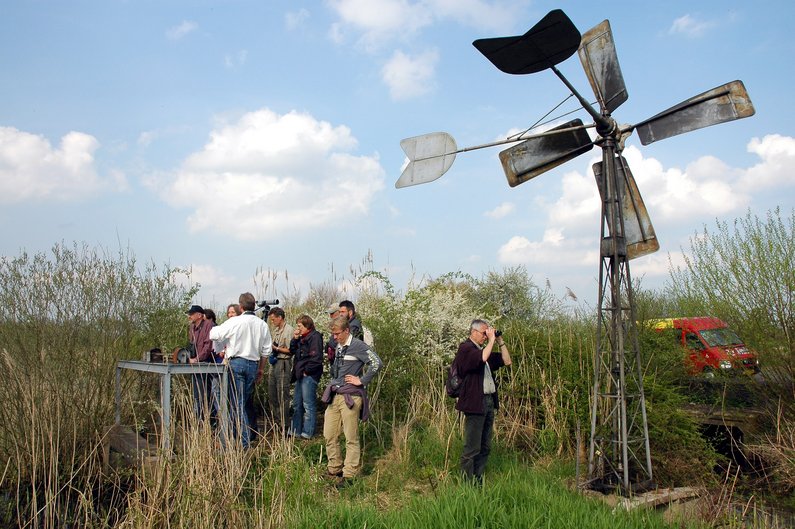
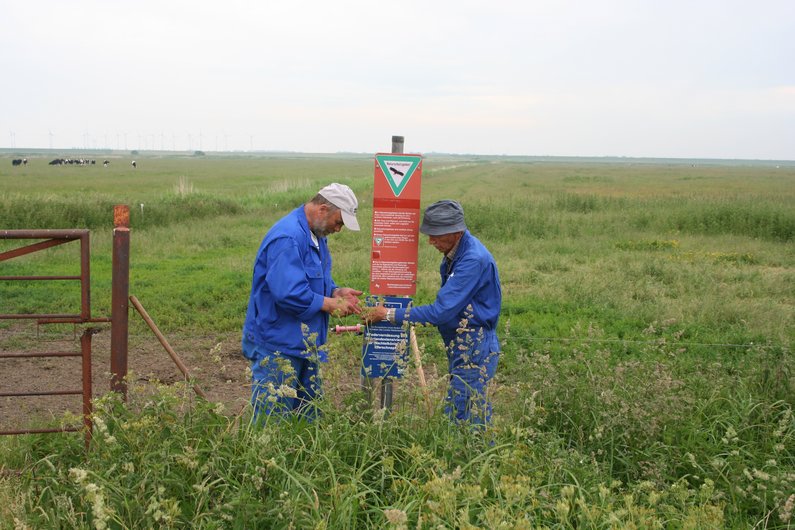
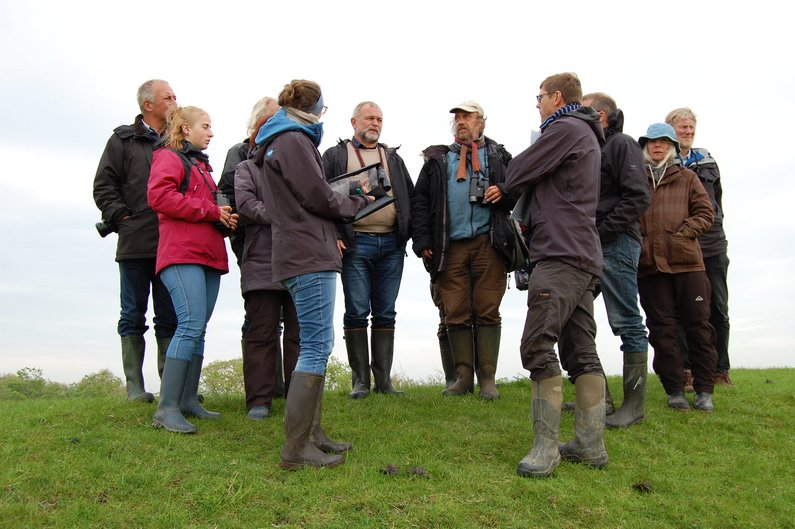
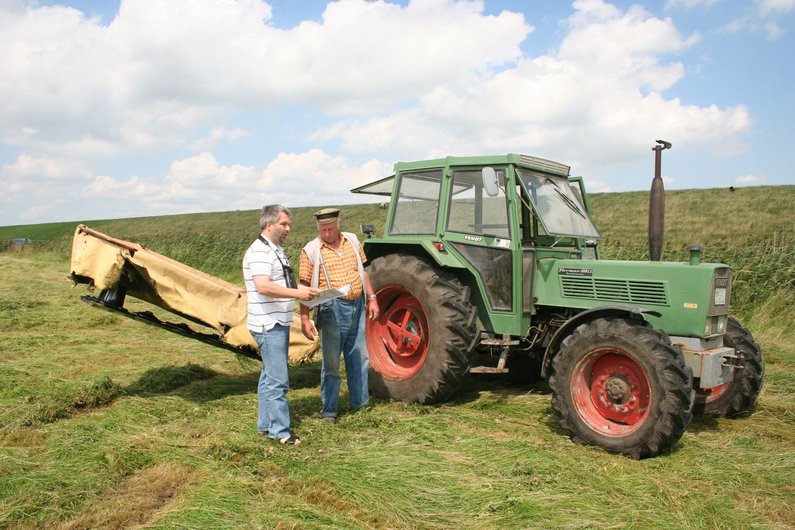
Key factors
There are ten factors necessary to maintain optimised grassland bird breeding habitats, namely:
- Large areas of continuous grassland
- Open landscape, free from woods, scrub and reed
- Low level of disturbance
- High water tables and temporarily flooded areas
- Soils with low or intermediate trophic levels
- Mowing and grazing regimes compliant with nesting distribution and timing
- Sufficient grazing intensity for an optimal vegetation structure
- High heterogeneity at the landscape and parcel levels
- Moderate predation rate
- Well-organised on-site management and monitoring
How we achieve these factors
In this project, we plan to reduce land use intensity wherever possible, especially on newly purchased land. The land purchase itself shall comprise 2,000 ha of grassland.
Low-intensity grasslands will be developed through lease agreements with farmers. Other measures will follow depending on the quality of the parcels, such as optimising water tables.
This includes high groundwater levels in general and flooded areas during winter. There are many options to achieve these conditions, e.g. through adjustable water retention or active water inflow.
Additional measures might be necessary to maintain attractive breeding grounds in early spring: Grass vegetation must be short, scrub must be removed and areas of shallow waters need to be created.
So, measures will include mowing in late summer (so the vegetation stays short until next spring), removing disturbing vegetation or preparing sinks that collect water.
It is also important to avoid losses from predation. First, we need to identify which predators are the important ones (which will differ from year to year and area to area) and then we need to implement measures to reduce losses of breeding birds, chicks and clutches to a minimum.
Attentive on-site management needs to be carried out. Even at the sites with the best habitat conditions, site managers constantly have to respond to new influences, undesirable changes and damages.
And finally, we must maintain a constant dialogue with land users, responsible authorities, political representatives, the public, and nature conservationists and lovers.
Good and bad habitat conditions
